- Local Time: 01:51 AM
- Weather: 18 ℃ / 65 ℉
The Wait Is Over – The GRAND EGYPTIAN MUSEUM Is Opening Its Doors! Be among the first to explore Egypt’s greatest treasure.
The Unfinished Obelisk in Aswan, commissioned by Queen Hatshepsut, was intended to be the largest obelisk ever made at 42 meters tall. The project was abandoned due to cracks in the granite during carving. Despite being unfinished, it offers valuable insights into ancient Egyptian stone-working techniques, including the use of dolerite balls and methods for detaching stone from bedrock. The obelisk holds symbolic significance, representing the connection between the earth and the divine, particularly the sun god Ra. Today, it serves as an open-air museum, showcasing the advanced construction methods and religious devotion of ancient Egypt.
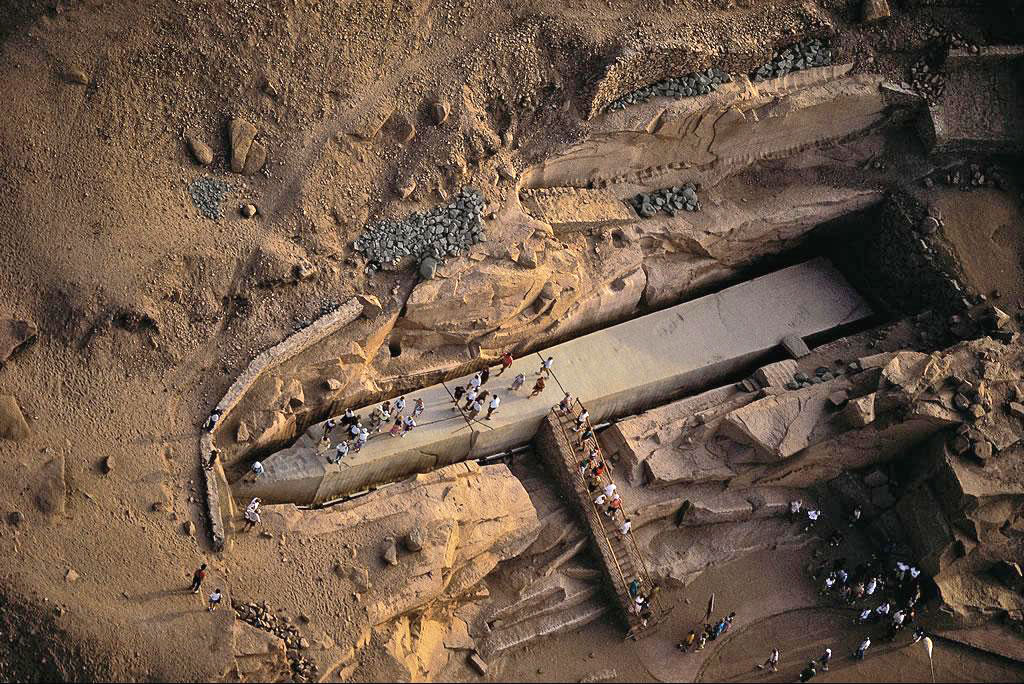
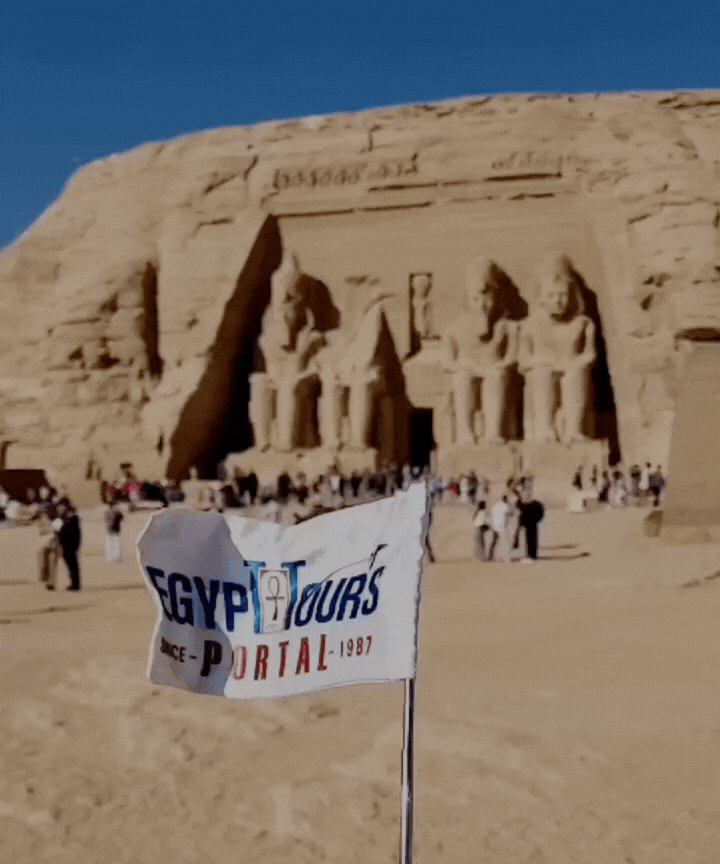
One of the marvelous monoliths of Aswan is the majestic Unfinished Obelisk, which acts as a living proof of the unmatched intelligence and skill of ancient Egypt, which wished to create an enormous tale from stone. It is without a doubt the largest obelisk ever constructed, but unfortunately was uncompleted. It offers the chance to shed some light on how such massive structures were created in ancient Egypt during Egypt new kingdom by the hands of Hatshepsut. This immortal piece of glorious art is key to fully understanding the secret of the ancient Egyptian construction process.
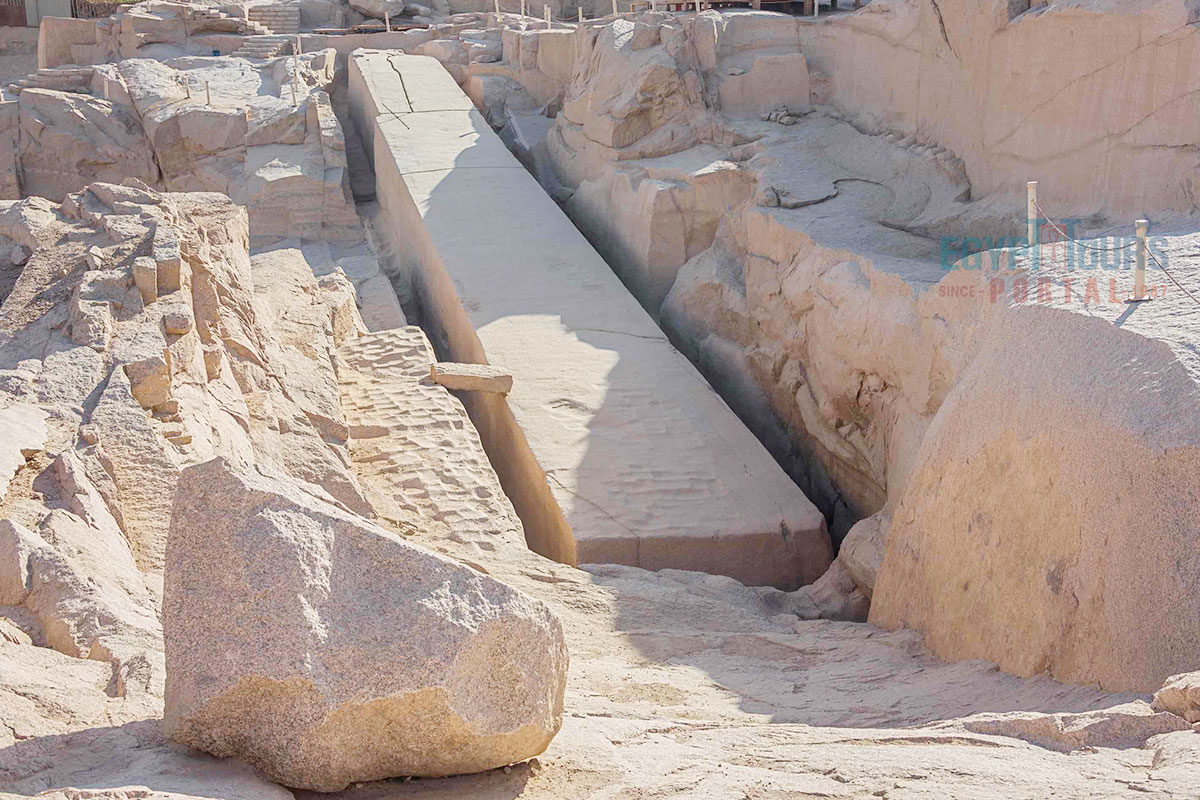
The Unfinished Obelisk is located in a granite quarry in Aswan, within an area historically known for producing some of the finest granite used in ancient Egyptian architecture. Situated on the east bank of the Nile river, this quarry was an essential source of high-quality granite used in constructing temples, statues, and monumental obelisks across Egypt.
The quarry’s strategic location provided easy access for transporting stone blocks along the Nile to significant ancient sites such as Luxor and Karnak, where massive granite structures were erected to honor the gods and immortalize the pharaohs.
Today, the quarry is a preserved open-air museum, allowing visitors to walk among the relics of ancient Egypt’s ambitious stone-working projects and witness the massive Unfinished Obelisk still embedded in the bedrock. The site serves as a valuable historical and archaeological resource, shedding light on the ancient Egyptians' engineering prowess and their religious dedication to monumental architecture.

The Unfinished Obelisk in Aswan stands as one of the most significant examples of ancient Egyptian architecture, demonstrating not only the Egyptians’ technological expertise but also their deep cultural and religious convictions. This monument, carved during the New Kingdom’s 18th Dynasty, was commissioned by Queen Hatshepsut, one of Egypt's most powerful and ambitious rulers.
As the wife of King Thutmose II and later a co-regent with her stepson, Thutmose III, Queen Hatshepsut reigned from 1478–1458 B.C., during which she initiated several grand architectural projects across Egypt. The obelisk was intended for the Karnak Temple in Luxor, a sacred site dedicated to the god Amun-Ra, and would have complemented the Lateran Obelisk, which also originated in Karnak before being relocated to Rome centuries later.
If completed, the Unfinished Obelisk would have stood at a height of 42 meters (137 feet), surpassing all known ancient obelisks, including the Lateran Obelisk, which measures around 32 meters (105 feet). Its sheer size and scale illustrate the Egyptians’ skill and their desire to create enduring structures as a means of securing their legacy and connecting with the divine.
Weighing an estimated 1,200 tons, this obelisk would also have been the heaviest stone monument of its kind, an achievement that underscores the Egyptians' sophisticated understanding of construction techniques. However, due to the unfortunate discovery of cracks in the granite during its carving, the project was abandoned, leaving the obelisk still partially attached to the bedrock, preserved in its quarry location to this day.
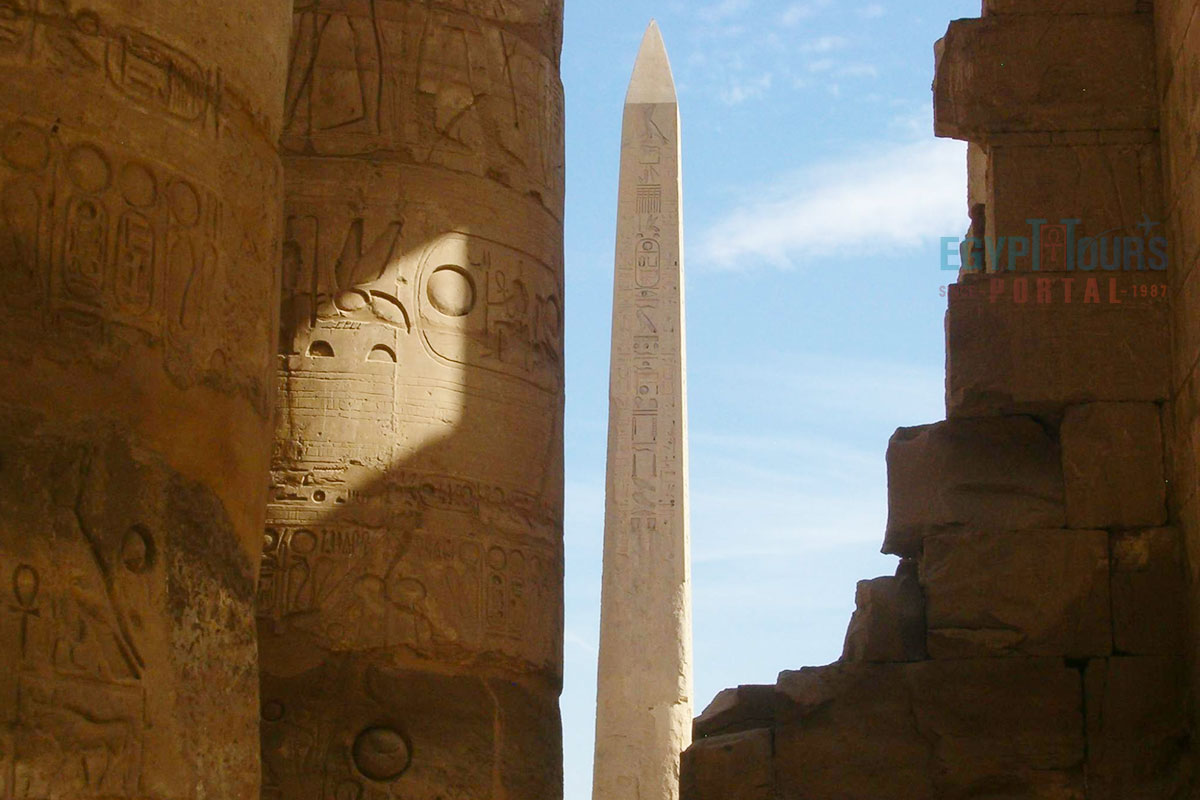
The obelisk form itself holds significant spiritual meaning within ancient Egyptian culture. Carved from red granite, the Unfinished Obelisk was created to resemble the "primeval hill," a mythical feature in Egyptian creation stories symbolizing the first emergence of the world. This sacred concept represents the mound that rose from the chaotic waters of Nun at the dawn of creation.
Obelisks, known to the Egyptians as "Tekhenu," or "To Pierce the Sky," were believed to channel divine energy and symbolize the power of the ancient Egyptian gods, particularly that of the sun god Ra, who was central to Egyptian cosmology. Their tall, slender structure and pyramidal top were designed to catch the first rays of the morning sun, channeling its light and energy downwards in a gesture of divine blessing.
The obelisk was also associated with the BenBen stone, a sacred object thought to embody the cosmic mound upon which the creator god Atum stood during the world’s creation. It is erected in temple courtyards and sacred spaces, obelisks served as focal points for the worship of Ra and represented the pharaoh’s connection to the gods, often commemorating their rule and achievements.
Some historians and archaeologists also link the origins of the obelisk to natural astronomical phenomena, suggesting that its shape and orientation may have been inspired by celestial alignments with the sun, lights of the zodiac, or certain constellations. This cosmic symbolism made the obelisk a powerful element in the Egyptians' spiritual architecture, representing both the pharaoh’s authority and the perpetuity of divine order.
Discover the extraordinary obelisks of the ancient Egyptian civilization
Read More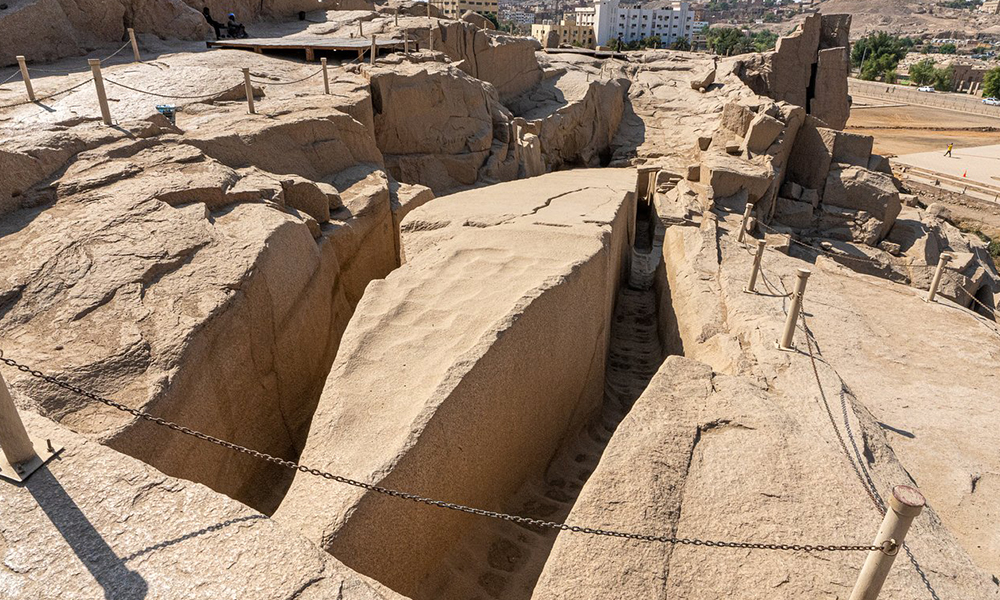
The site of the Unfinished Obelisk is preserved as an open-air museum, allowing modern visitors to explore the quarry and witness the advanced stone-working techniques used by the ancient Egyptians. The obelisk reveals evidence of the tools and methods employed to carve such a massive structure. Workers used a technique involving dolerite balls, which are small, hard stones that are more durable than granite.
These dolerite balls were likely used to chip away at the granite’s surface slowly, leaving characteristic marks that are still visible on the rock. The painstaking process of chiseling the rock away required both skill and endurance, as workers carved along the desired shape of the obelisk using repeated, controlled strikes.
The Egyptians also employed ingenious methods to separate the obelisk from the bedrock. After carving it almost entirely out of the granite bed, workers would create small cavities along the line where they wanted the rock to split. They filled these cavities with dry wooden wedges, which were then soaked with water.
The wood would expand as it absorbed the water, generating enough pressure to fracture the rock along the line of the cavities. This natural technique allowed the stone to detach cleanly from its base, a testament to the Egyptians’ resourcefulness and understanding of materials.
Besides the Unfinished Obelisk, the Aswan quarry holds other smaller carved stones and objects that suggest the site was a primary source of granite for Egypt's monumental construction projects. Many of Egypt’s iconic obelisks, statues, and temple structures were made from Aswan granite, prized for its durability and rich reddish hue.
The remains of other half-carved stones at the quarry indicate that the site may have supplied granite for obelisks placed in important locations throughout Egypt, as well as for the massive colossi and temples seen in Luxor, Karnak, and even across the Mediterranean sea in ancient Rome.

The Unfinished Obelisk project was abandoned when structural flaws became evident in the stone. During the carving process, workers encountered cracks in the granite that would have compromised the obelisk’s integrity and stability. Ancient Egyptian builders had planned for the obelisk to stand upright, where it would need to endure various stresses and environmental factors.
The cracks, which would have continued to expand over time, made it impossible for the obelisk to maintain the stability required for an upright position. Attempting to transport and erect such a massive structure with inherent weaknesses would have posed significant risks. Unable to proceed, the craftsmen left the obelisk in its quarry, providing a rare and instructive glimpse into the techniques and challenges faced by the ancient Egyptians in their monumental architectural endeavors.

The Unfinished Obelisk site is a celebrated archaeological treasure in Egypt, providing scholars and visitors with invaluable insight into the ancient Egyptians' architectural prowess and religious beliefs. The site has been designated as an open-air museum and is protected by the Egyptian government.
Visitors can walk through the quarry, observing the tool marks, rock cuts, and unfinished elements that reveal a window into the daily lives and meticulous processes of ancient workers. Through the preservation of such sites, the legacy of ancient Egyptian stone-working, their dedication to the gods, and their architectural ambition continue to inspire people worldwide.
The Unfinished Obelisk encapsulates the Egyptians’ extraordinary commitment to their beliefs and their advanced engineering capabilities, showcasing how the ancient world was capable of undertaking projects that would be challenging even with today’s technology. It stands as a symbol of a culture that prized its connection with the cosmos, dedicated itself to honoring the gods, and pursued monumental architecture to achieve a sense of timelessness and divine alignment.
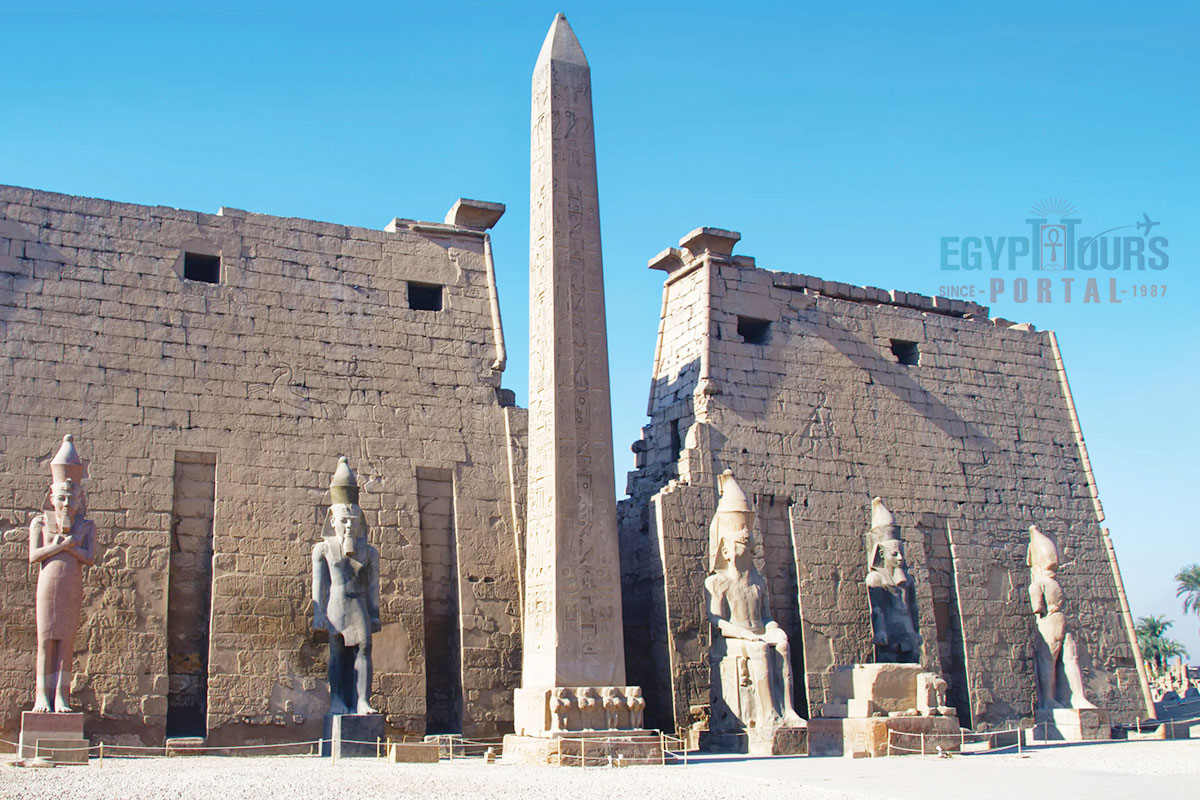
There are an additional eight great Obelisks, which remain in Egypt till today:
There are a lot of mesmerizing ancient Egyptian attractions in Cairo, Luxor, Aswan, and Alexandria that should be discovered, so if you are interested in history and ancient landmarks, then you can check our Egypt tours and our magical Nile river cruise and choose your favorite trip to Egypt.
Day Trip to Abu Simbel from Aswan For American Travelers Day Trip to Abu Simbel from...
Tour Location: Abu Simbel...
Aswan Sightseeing Tour For American Travelers Aswan Sightseeing tour will be a trip ...
Tour Location: Aswan...
Day Trip from Aswan to Edfu & Kom Ombo Temples for American Travelers Day Trip f...
Tour Location: Edfu/Kom Ombo...
Day Trip from Aswan to Cairo by Plane for American Travelers Day Trip from Aswan to ...
Tour Location: Cairo/Giza...
The Unfinished Obelisk is estimated to weigh around 1,200 tons, equivalent to approximately 2.6 million pounds or 1,090 metric tonnes. If it had been completed and erected, it would have been the heaviest obelisk ever created, surpassing other ancient Egyptian obelisks in weight and scale. Its immense weight highlights the Egyptians’ ambitions and the remarkable challenges they faced in quarrying and transporting stone monuments.
The purpose of the Unfinished Obelisk, like other obelisks, was to serve as a religious and political monument. Obelisks were associated with the sun god Ra and symbolized a connection between the earthly realm and the divine. Often placed at the entrances of temples, obelisks were intended to honor the gods, project the authority of the ruling pharaoh, and serve as a testament to the architectural and technological achievements of the civilization.
The Unfinished Obelisk was likely intended for the Karnak Temple in Luxor, where it would have stood as a towering symbol of Queen Hatshepsut’s reign and devotion to the gods. Its size and design reflect the grandeur of her architectural vision and her desire to leave a lasting legacy.
The Unfinished Obelisk dates back to Egypt’s New Kingdom, specifically to the 18th Dynasty, during the reign of Queen Hatshepsut (circa 1478–1458 B.C.). This makes the obelisk over 3,400 years old. It was carved from the granite quarries of Aswan, a resource highly valued by the Egyptians for its durability and color, used in numerous royal and religious structures. The quarry site and the obelisk itself provide a unique archaeological record, revealing the construction techniques and craftsmanship of ancient Egypt’s builders.
The entire country of Egypt deserve to be explored with its every heavenly detail but there are places that must be seen before any other such as the breathtaking Hurghada's red sea, The wonders of Cairo the pyramids of Giza, the great sphinx, the Egyptian Museum, Khan El Khalili Bazaar, the wonders of Luxor like Valley of the Kings, Karnak & Hatshepsut temple and the wonders of Aswan such as Abu Simbel temples, Philea temple, Unfinished obelisk and The Wonders of Alexandria like Qaitbat Citadel, Pompey's Pillar and Alexandria Library. Read more about the best places to visit in Egypt.
If you want to apply for a Visa On Arrival that lasts for 30 days then you should be one of the eligible countries, have a valid passport with at least 6 months remaining and pay 25$ USD in cash, as for the E-Visa for 30 day you should have a valid passport for at least 8 months, complete the online application, pay the e-visa fee then print the e-visa to later be presented to the airport border guard. You could also be one of the lucky ones who can obtain a free visa for 90 days. Read more about Egypt travel visa.
Egypt has a variety of delicious cuisines but we recommend “Ful & Ta’meya (Fava Beans and Falafel)”, Mulukhiya, “Koshary”, a traditional Egyptian pasta dish, and Kebab & Kofta, the Egyptian traditional meat dish.
The best time to travel to Egypt is during the winter from September to April as the climate becomes a little tropical accompanied by a magical atmosphere of warm weather with a winter breeze. You will be notified in the week of your trip if the Climate is unsafe and if any changes have been made.
You should pack everything you could ever need in a small bag so you could move easily between your destinations.
We have been creating the finest vacations for more than 20 years around the most majestic destinations in Egypt. Our staff consists of the best operators, guides and drivers who dedicate all of their time & effort to make you have the perfect vacation. All of our tours are customized by Travel, Financial & Time consultants to fit your every possible need during your vacation. It doesn't go without saying that your safety and comfort are our main priority and all of our resources will be directed to provide the finest atmosphere until you return home.
You will feel safe in Egypt as the current atmosphere of the country is quite peaceful after the government took powerful measures like restructuring the entire tourist police to include all the important and tourist attractions in Egypt. Read more about is it safe to travel to Egypt.
Wear whatever feels right and comfortable. It is advised to wear something light and comfortable footwear like a closed-toe shoe to sustain the terrain of Egypt. Put on sun block during your time in Egypt in the summer to protect yourself from the sun.
The best activity is by far boarding a Nile Cruise between Luxor and Aswan or Vise Versa. Witness the beauty of Egypt from a hot balloon or a plane and try all the delicious Egyptian cuisines and drinks plus shopping in old Cairo. Explore the allure and wonders of the red sea in the magical city resorts of Egypt like Hurghada and many more by diving and snorkeling in the marine life or Hurghada. Behold the mesmerizing western desert by a safari trip under the heavenly Egyptian skies.
There are a lot of public holidays in Egypt too many to count either religious or nation, the most important festivals are the holy month of Ramadan which ends with Eid Al Fitr, Christmas and new years eve. Read more about festivals & publich holidays in Egypt.
Egypt is considered to be one of the most liberal Islamic countries but it has become a little bit conservative in the last couple of decades so it is advised to avoid showing your chest, shoulders or legs below the knees.
Arabic is the official language and Most Egyptians, who live in the cities, speak or understand English or at least some English words or phrases. Fewer Egyptians can speak French, Italian, Spanish, and German. Professional tour guides, who work in the tourism sector, are equipped to handle visitors who cannot speak Arabic and they will speak enough English and other languages to fulfill the needs of all our clients.
The fastest way is a car, of course, a taxi. If you are in Cairo ride a white taxi to move faster or you could board the fastest way of transportation in Egypt metro if the roads are in rush hour.
The temperature in Egypt ranges from 37c to 14 c. Summer in Egypt is somehow hot but sometimes it becomes cold at night and winter is cool and mild. The average of low temperatures vary from 9.5 °C in the wintertime to 23 °C in the summertime and the average high temperatures vary from 17 °C in the wintertime to 32 °C in the summertime. The temperature is moderate all along the coasts.
It is the home of everything a traveler might be looking for from amazing historical sites dating to more than 4000 years to enchanting city resorts & beaches. You will live the vacation you deserve as Egypt has everything you could possibly imagine.









